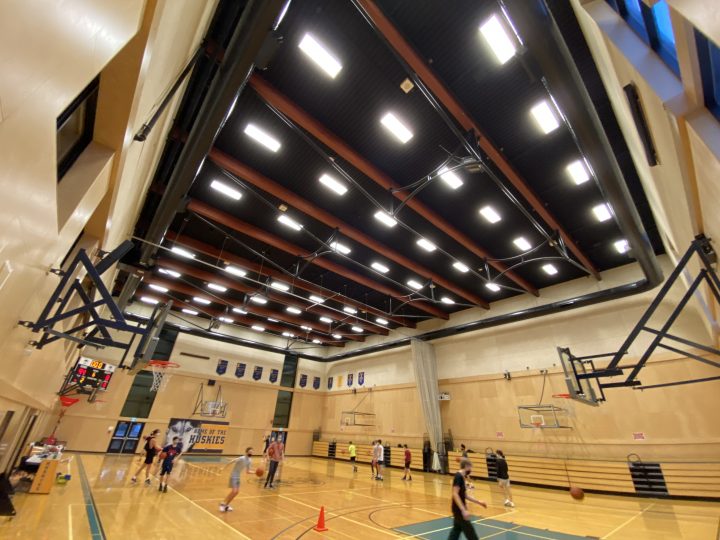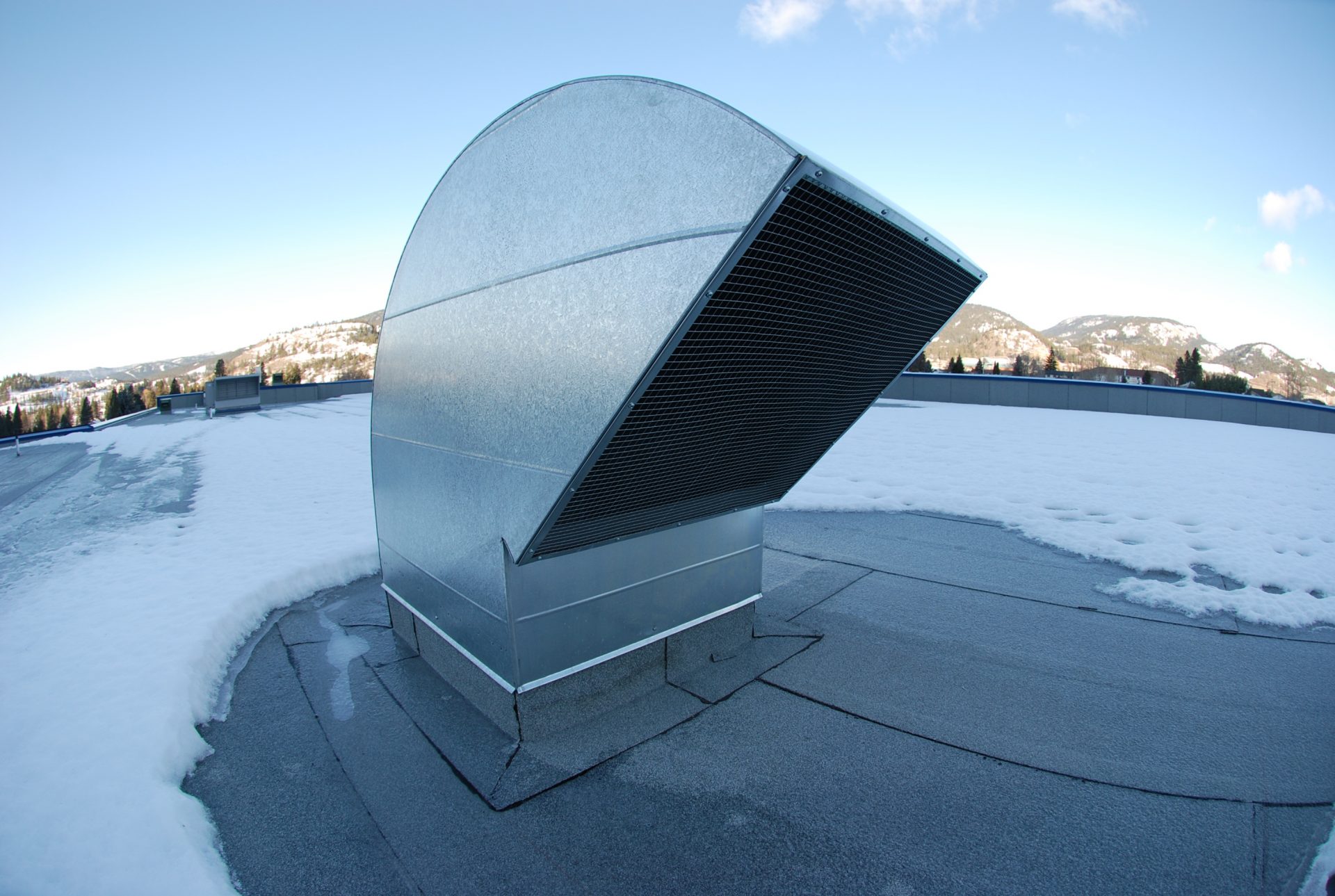Written By Don Poole, P.Eng.
Falcon Engineering frequently performs surveys on existing buildings prior to an HVAC upgrade. Sometimes the equipment is ageing, or sometimes occupant comfort complaints trigger the upgrade. Here are the most common and effective means to improve comfort if air systems are being used to heat and cool spaces (if the terminal equipment is correctly sized).
1. One Unit for One Zone
Similar loaded rooms can be combined into one zone.
My mentor, Doug Joorisity, and I sorted this one out years ago when the smallest rooftop unit that was available was 5 tons. We would often design two classrooms to be served by a single rooftop unit. The classroom with the thermostat was always comfortable, while the classroom without suffered significant temperature swings. Applying Variable Volume Variable Temperature (VVT) systems to this situation did not end satisfactorily. Once the 2½ ton rooftop unit became available, you could implement an appropriate solution.
A group of offices, such as a group of councilors rooms, can be considered a single zone if they:
- Share an outside wall
- Have the same window size
- Have the same floor space
The room temperatures can be very similar in each room. The only problem might be that the occupant may want different temperatures.
2. Ducted Low-Level Return
Reduces stratification and short-circuiting, improves ventilation effectiveness and saves energy.
When I was in high school, I noticed in winter that the woodshop mezzanine where projects were stored was always significantly warmer than the main floor. I didn’t think much of that until I became an HVAC engineer and noticed that the return air in these woodshops was at ceiling level. In an upgrade to one of these woodshops, with School District 23 in Kelowna, we installed a ducted return air grille at the floor level. Matt Garbelya at the District helped us figure a way to get a filter into the low-level return to keep fine sawdust out of the return duct. By using infrared temperature measuring devices, we could see the hot air, which would have been stratified to the ceiling, drawing down to the floor.
After that, we employed a low-level return system at a large secondary school in Prince George. The existing system was multi-zoned, using the ceiling space as a return plenum and the return air grilles were merely egg crates mounted in the T-Bar ceiling. The upgrade replaced the old multi-zone systems with new ones, with low-level ducted returns employed in each classroom. The results? A school considered chronically cold in the winter became comfortable. The management noticed significant gas bill savings, and students were no longer wearing their winter jackets all day.

3. Positive Building Pressures
Minimizes drafts.
Rob Bruce, a sage and experienced commissioning agent, taught me that slightly positive pressure in a school significantly improves comfort. He spent many years in northern Alberta and knew how much difference it makes.
The point of pressurizing a building during the occupied mode is to eliminate drafts through the building envelope. We deployed methodology on a significant HVAC upgrade at a school in the Okanagan Valley. Prior to the upgrade, the receptionist in the central office near the main entryway was always cold. They even had an electric heater under desks to warm their feet. When interviewed after the building was positively pressurized, they reported that they didn’t need the heater all winter, and they were considering removing the heater completely!
4. Dedicated Relief Exhaust
Enables full economizing.
I completed an HVAC update at a school in Vernon. It was an older school, and I assumed that the building was leaky enough that a relief system wouldn’t suffice. That was at a time when we started to use demand control ventilation, so we measured CO2 levels. We noticed that CO2 levels in one room, in particular, would sometimes spike way beyond the limit. We experimented with the teacher – one full-class day with the door to the room closed and one day with the door open. The trend logs showed that, with the door open to form the relief path, the CO2 could be maintained at acceptable levels. We introduced a dedicated relief exhaust system and solved the CO2 problem. In addition, we achieved full free cooling (also known as economizing). Without the relief exhaust, such function was severely hindered.
The moral of that story is “You can only shove air into a pop bottle for so long”!

5. Tempered Outside Air
Natural ventilation isn’t effective when it is -18°C (0°F) outside
A new college building in the Interior was designed to employ natural ventilation for the outside air source. We deemed the stack effect insufficient, so we introduced large fans to create a negative pressure in the atrium. Some of the outside air was tempered, but the bulk of outside air entering the building leaked through building envelope cracks. The design resulted in awful cold drafts.
We introduced a make-up air system to reduce the negative pressure, and it helped, but nearly every single office in the whole building had a plug-in electric heater. Whatever energy the original designer hoped to save with the natural ventilation system was more than lost with the electric heaters. It was unfortunate that so many people suffered needlessly.

6. Air Outlet Velocity in the Occupied Zone is Less Than 0.25m/s (50 feet per minute)
A school hired us to investigate a problem in which classroom occupants complained of drafts. Linear diffusers were initially installed at the perimeter (presumably to wash the wall), but they were installed about 2 meters off the wall. The air outlets were too noisy with the outlets aimed horizontally, so the air outlets were left pointing downward. The cooling mode produced intolerable drafts. We replaced the linear diffusers with standard cone-style diffusers, solving this draft problem.
Conclusion
Configuration of the supply and return air systems in a classroom will significantly impact occupant comfort. This is especially true for areas experiencing extreme outdoor temperatures for both heating and cooling. We have seen significant comfort improvements in deploying the above strategies, so it’s well worth the time and effort to keep these tactics in mind during the initial HVAC design. In some cases, we see significant energy savings as well.
Let us know if you have any questions by using our contact page!
Want to learn more about mechanical engineering? Check out some of our other blogs!